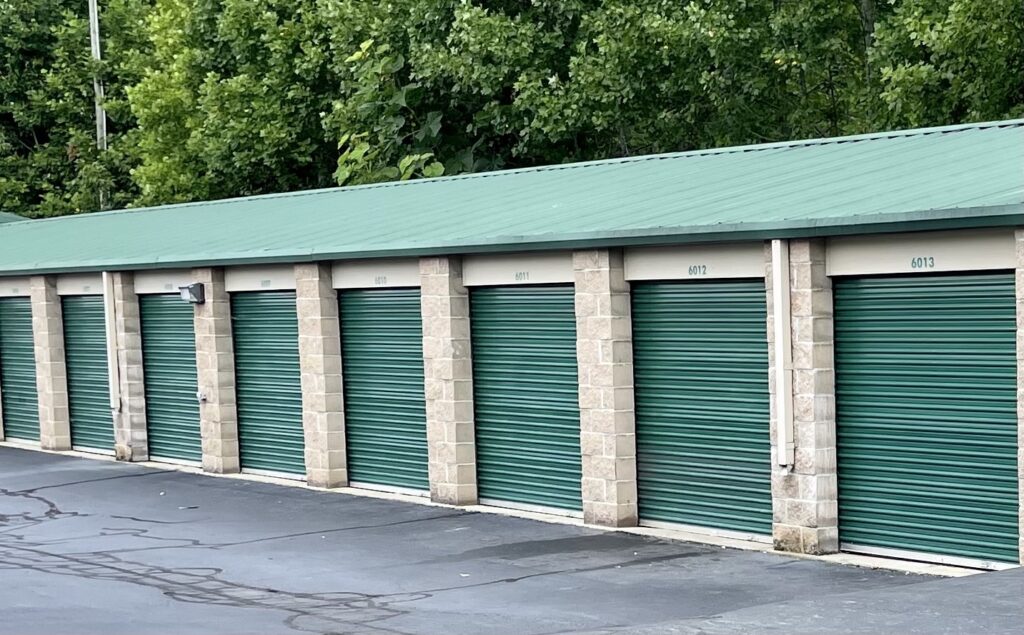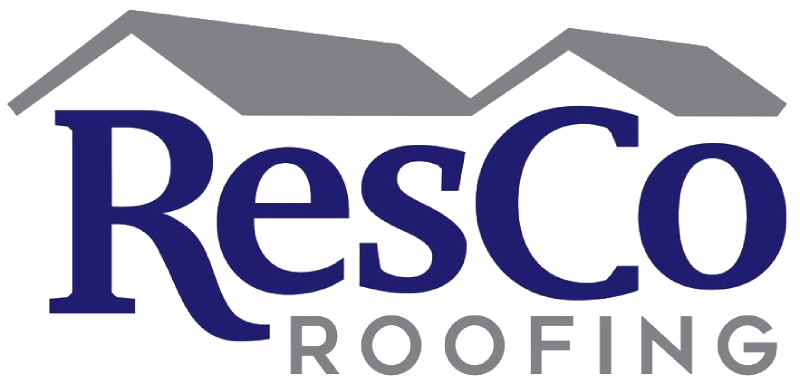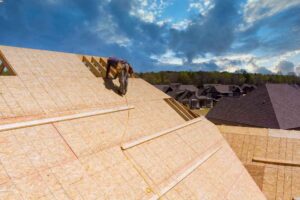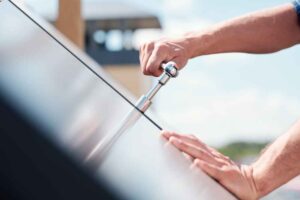Saving Money and the Environment: The Sustainable Choice for Metal Roofing Residential
The roof over your head provides a lot more than just shelter; it is a critical component of your home’s character, protection, and overall value. As global awareness of climate change and environmental sustainability grows, more homeowners are considering long-term, eco-friendly solutions for their roofing needs. Metal roofing has emerged as a frontrunner in this space, offering a blend of sustainability, durability, and cost-efficiency that is hard to beat. If you’re in the market to replace or install a new roof, read on to discover why metal roofing residential might be the ideal choice to save money and the environment simultaneously.
Benefits of Metal Roofing
While the initial cost of metal roofing may be higher than traditional options like asphalt shingles, its long-term benefits make it a more cost-effective and environmentally responsible investment. Here are some key advantages of metal roofing:
- Longevity and Durability: One of the most compelling benefits of metal roofing is its impressive lifespan. Unlike traditional asphalt shingles that may need replacing every 15 to 20 years, metal roofs can last 50 years or more with minimal maintenance. This durability stems from metal’s inherent resistance to harsh weather conditions such as heavy snow, hail, and high winds. Additionally, metal roofs are not prone to cracking, shrinking, or eroding over time, making them a stalwart protector of your home.
- Energy Efficiency: Metal roofing significantly contributes to energy savings during the warmer months. Its reflective properties reduce the amount of heat absorbed from the sun, thus keeping your home cooler and reducing the need for air conditioning. In some cases, a metal roof can lead to as much as a 25% reduction in cooling costs, making it both an environmentally friendly and cost-effective choice.
- Eco-Friendly Material: A large percentage of metal roofing material is made from recycled content, and it is 100% recyclable at the end of its life. This stands in stark contrast to asphalt shingles, which contribute billions of pounds of waste to landfills annually. Choosing a metal roof reduces waste and promotes the use of sustainable materials, aligning with the goals of homeowners who prioritize environmental responsibility.
- Versatility in Design: Metal roofing comes in a wide array of styles, colors, and finishes, ensuring that there is an option that can beautifully complement any home architecture. Whether you prefer a sleek, modern look or a traditional, rustic appearance, metal roofing can be customized to meet your aesthetic desires. This versatility allows homeowners to not only invest in an eco-friendly and durable roofing solution but also to enhance the curb appeal and value of their home.
By combining longevity, energy efficiency, environmental sustainability, and aesthetic versatility, metal roofing stands out as a superior choice for homeowners seeking to make a responsible, durable, and cost-effective investment in their property’s future.

Types of Metal Roofing
When considering metal roofing for your home, it’s important to understand the various types available to make an informed decision that aligns with your specific needs and preferences. Each type of metal roofing offers unique benefits and aesthetic appeal. Here are the most common types of metal roofing:
- Aluminum Roofing is known for its resistance to corrosion and rust, making it an excellent choice for homes in coastal areas where salty air can accelerate metal degradation. It’s also lightweight and durable, with a natural ability to reflect solar radiant heat, contributing to energy efficiency.
- Steel Roofing is incredibly strong and can withstand severe weather conditions. It is usually coated with zinc or a zinc-aluminum mixture to enhance its resistance to corrosion. Steel roofing is versatile, available in a variety of colors and styles, and is one of the most recyclable materials on the market.
- Copper Roofing offers unparalleled beauty and longevity, with some copper roofs lasting over a century. It weathers naturally to a greenish patina over time, adding character and charm. Copper is extremely durable and requires very little maintenance, but it is also the most expensive metal roofing option.
- Zinc Roofing is highly durable and resistant to corrosion. Like copper, zinc develops a protective patina that extends its lifespan and heals scratches over time. Zinc roofs are environmentally friendly, due to their low melting point which reduces energy use during production, and their 100% recyclability.
- Tin Roofing, though less common today, has a rich history in roofing. Originally, “tin” roofing was made from sheets of iron or steel coated with tin. Now, what is often referred to as tin roofing is actually terneplate, a steel sheet coated with a lead and tin mixture. It’s durable and has a distinctive appearance but requires more maintenance to prevent corrosion.
Each type of metal roofing has its advantages, and the choice often depends on the homeowner’s climate, budget, aesthetic preference, and environmental priorities. With the variety of options available, metal roofing provides a versatile and sustainable solution for nearly any home.
The Cost of Metal Roofing
When it comes to the cost of metal roofing, homeowners must consider both the initial investment and the long-term savings. Although the upfront cost of metal roofing materials and installation can be higher than that of traditional roofing materials, such as asphalt shingles, the longevity, durability, and energy savings associated with metal roofs often translate into substantial cost savings over time. On average, the cost of metal roofing materials ranges from $5 to $12 per square foot, with installation costs adding an additional $2 to $5 per square foot. The total cost can vary significantly based on the type of metal chosen, the complexity of the roof design, and regional labor rates. For instance, materials like copper and zinc are at the higher end of the price spectrum due to their superior durability and aesthetic appeal, while aluminum and steel are more cost-effective options that still offer considerable benefits.
Despite the initial expense, the energy efficiency, minimal maintenance, and exceptional lifespan of metal roofs can make them a more economical choice in the long run compared to traditional roofing materials. The reduced need for repairs and replacement means that homeowners can enjoy decades of worry-free protection for their homes, making the investment in metal roofing a financially sound decision over time. Furthermore, the potential for energy savings during the warmer months, thanks to the reflective properties of metal roofing, can lead to a noticeable reduction in monthly utility bills, further enhancing the cost-effectiveness of this roofing option.
Additionally, considering the environmental impact of roofing materials, metal roofing emerges as an eco-friendly alternative. The recyclability of metal roofing materials and their contribution to sustainable building practices can also be factored into the overall value proposition. Homeowners who prioritize environmental responsibility along with cost savings are increasingly turning to metal roofing as a solution that aligns with their values and financial goals. In summary, while the upfront cost of metal roofing may be higher, its durability, energy efficiency, and environmental benefits offer a comprehensive suite of advantages that underscore its long-term cost-effectiveness.

Installation Process and Maintenance
The installation of a metal roof is a complex procedure that requires precision and expertise. Typically, the process begins with an inspection of the existing roof structure to assess its condition and suitability for a metal roof installation. Following this, any necessary repairs or reinforcements are made to ensure the structure can support the new roof.
The next steps involve measuring and cutting the metal roofing panels to fit the roof’s dimensions, installing a waterproof underlayment, and then laying down the metal panels or shingles. These are secured with clips or fasteners, which are designed to allow for thermal expansion and contraction. Edges, seams, and vent openings are then sealed to prevent water infiltration.
The timeline for installing a metal roof can vary significantly depending on factors such as the size and complexity of the roof, weather conditions, and the specific type of metal roofing system being installed. On average, the installation process can take anywhere from a few days to two weeks.
The Importance of Professional Installation
Hiring a professional installer is crucial for ensuring that your metal roof is installed correctly. Professional installers possess the necessary skills, experience, and tools to perform the job accurately, which can significantly reduce the risk of issues such as leaks, improper alignment, and inadequate ventilation. These problems can compromise the roof’s integrity, lead to costly repairs, and diminish the roof’s lifespan. A professional installer will also ensure that the installation complies with local building codes and manufacturer’s specifications.
Maintenance Tips for Maximizing Lifespan and Cost-efficiency
Despite metal roofing’s durability, proper maintenance is essential to maximize its lifespan and cost-efficiency. Routine maintenance tips include:
- Inspect Regularly: Conduct semi-annual inspections to identify and address any issues such as loose fasteners, sealant failures, or signs of corrosion.
- Keep it Clean: Remove any debris, leaves, and branches that accumulate on the roof. In regions prone to snow, use a roof rake to gently remove snow build-up.
- Prevent Metal Corrosion: Apply protective coatings as needed, especially in coastal areas where salt spray can accelerate corrosion.
- Trim Overhanging Branches: Prevent damage by trimming any branches that could scrape against the roof in the wind.
- Clean Gutters and Downspouts: Ensure that gutters and downspouts are clear of debris to prevent water buildup and overflow that can damage the roof edge.
By following these maintenance tips and investing in professional installation, homeowners can enjoy the full range of benefits metal roofing has to offer, including its remarkable durability, energy efficiency, and environmental friendliness, making it a wise and sustainable choice for any home.
Choosing the Right Metal Roofing Contractor
Selecting the ideal metal roofing contractor is a critical step in ensuring the success and longevity of your metal roofing project. To make an informed decision, consider the following criteria:
- Experience and Specialization: Look for a contractor with extensive experience in metal roofing. Specialization in metal roofing indicates a higher level of knowledge and skill, which can significantly impact the quality of the installation.
- Licenses and Insurance: Verify that the contractor holds all necessary licenses and insurance policies, including liability and worker’s compensation insurance. This protects you from liability in the event of accidents or damage during the project.
- Reputation and References: Research the contractor’s reputation by reading online reviews and asking for references. Contacting past clients can provide insight into their satisfaction with the work performed.
- Warranty Offers: Inquire about the warranties provided for both materials and workmanship. A reputable contractor should offer warranties that cover various aspects of the roofing system, ensuring long-term protection and peace of mind.
- Detailed Estimates: Obtain detailed, written estimates from several contractors. Estimates should include the scope of work, materials to be used, timeline, and any additional services. This helps in comparing options and understanding the value offered by each contractor.
- Professionalism and Communication: Choose a contractor who communicates clearly and promptly. Professionalism in interactions and a willingness to answer your questions can indicate a commitment to customer satisfaction and quality service.
By diligently evaluating potential contractors based on these criteria, you can confidently select a metal roofing contractor who will deliver a high-quality installation, maximizing the benefits and lifespan of your metal roof.
In conclusion, metal roofing is a long-lasting, cost-effective option that requires proper installation and maintenance for optimal performance. By investing in professional installation and following recommended maintenance tips, homeowners can enjoy the numerous benefits of metal roofing while ensuring its longevity and cost-efficiency over time. Taking the time to select a qualified contractor further adds to the success of your project, making metal roofing an excellent choice for any home. The benefits of metal roofing extend beyond just its durability and cost-effectiveness; it also offers aesthetic appeal, versatility in design and color options, and eco-friendliness. With proper installation and maintenance, a metal roof can last decades, making it a wise investment for any homeowner looking for a reliable and sustainable roofing solution.






